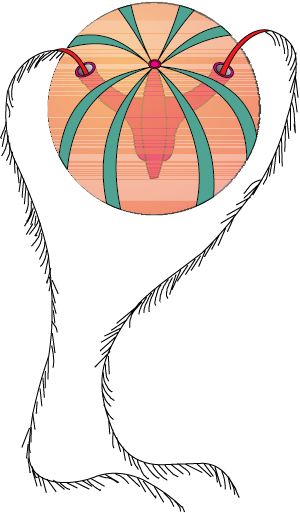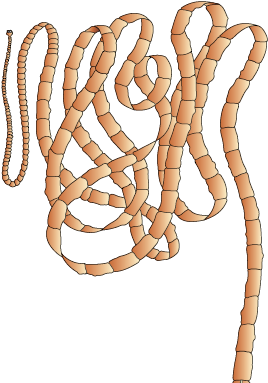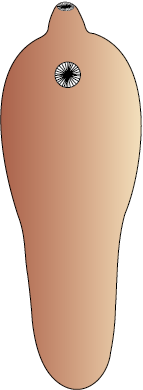Ctenophores, commonly known as sea walnuts or comb jellies are exclusively marine, radially symmetrical, diploblastic organisms with tissue level of organisation. The body bears eight external rows of ciliated comb plates, which help in locomotion (Figure 4.8). Digestion is both extracellular and intracellular. Bioluminescence (the property of a living organism to emit light) is well-marked in ctenophores. Sexes are not separate. Reproduction takes place only by sexual means. Fertilisation is external with indirect development.
Examples: Pleurobrachia and Ctenoplana.

Figure 4.8 Example of Ctenophora (Pleurobrachia)
They have dorso-ventrally flattened body, hence are called flatworms (Figure 4.9). These are mostly endoparasites found in animals including human beings. Flatworms are bilaterally symmetrical, triploblastic and acoelomate animals with organ level of organisation. Hooks and suckers are present in the parasitic forms. Some of them absorb nutrients from the host directly through their body surface. Specialised cells called flame cells help in osmoregulation and excretion. Sexes are not separate. Fertilisation is internal and development is through many larval stages. Some members like Planaria possess high regeneration capacity.
Examples: Taenia (Tapeworm), Fasciola (Liver fluke).



© 2025 GoodEd Technologies Pvt. Ltd.